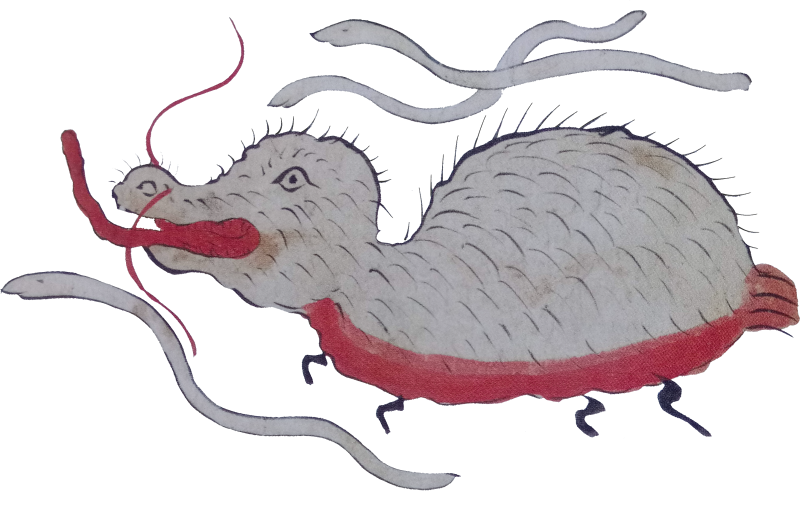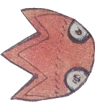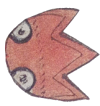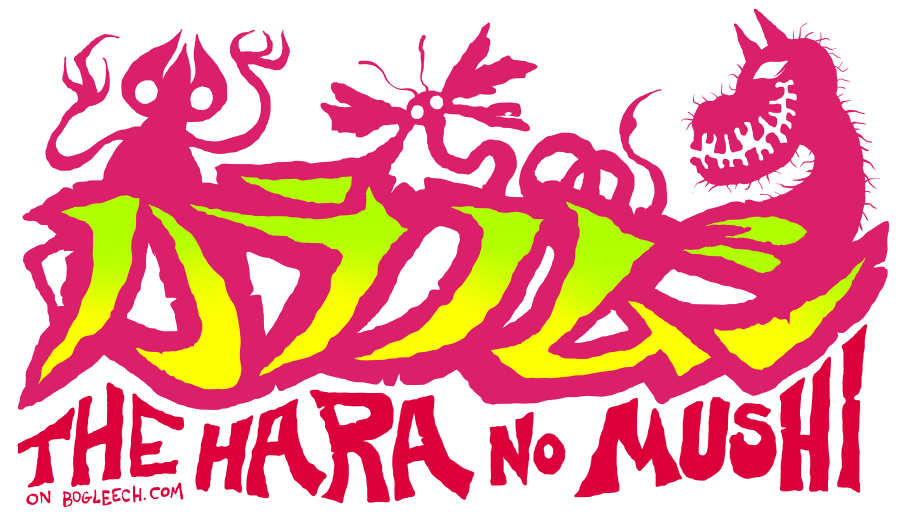
DAY TWO: JINSHAKU
Written by Jonathan Wojcik, Researched and Translated by Rev Storm
What's particularly interesting about this beast, however, is that it "associates with white worms" that wander about with it, and we're going to talk more on that in a moment.
Design Review:
Though likened in appearance to a boar, you can see that the Jinshaku is meant to only superficially resemble such a familiar animal. It's a pale, lumpy, blubbery and shaggy looking thing, with a pair of red antennae and an elongated tongue. It definitely has the feel of something more bug-like or parasitic than just a tiny pig monster.TODAY'S REAL PARASITE: Ascaris lumbricoides
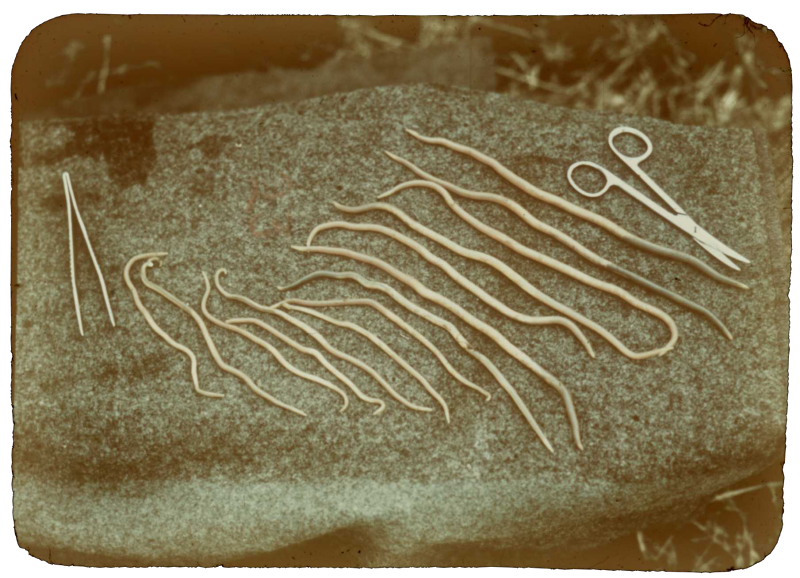
Photo: National Museum of Health and Medicine
No human parasite known to modern science could be mistaken for a wild boar, but Jinshaku's worm friends are very real. Less common in wealthier populations, Ascariasis is in fact one of the most prevalent of all parasitic infestations afflicting our species, a nematode worm spread by accidental ingestion of microscopic eggs through soil and water contaminated by human feces.From the moment it hatches in the host's stomach, a young lumbricoides does indeed do more traveling than most other parasites; first it bores its way into the duodenum, then rides the bloodstream into the liver and then into the heart, where pulmonary circulation sends it into the lungs. Three weeks later, it crawls up out of the respiratory system and triggers the host to cough, which is usually followed by swallowing. The worm's "final" destination is the small intestine, where it matures into an adult and awaits a mate. Both sexes are alarmingly large, but females in particular can grow up to fourteen inches long and nearly the width of a pencil.
A key word up there was "final." I put that in quotations for a reason. Though adapted to spend its adult life ideally in the small intestine, the mature worm is a highly active animal and the female can be so relentless in her search for a male that she may end up virtually anywhere in the body, causing some collateral damage along the way and sometimes even straying outdoors through the host's bowels, throat or sinuses.
This adds a pretty interesting twist to the Jinshaku, and highlights the fact that these "bugs" are neither necessarily real parasites nor necessarily just mythological. The Jinshaku itself doesn't literally exist, but the "white worms" it "rampages" with fit Ascaris to a T. It may be appropriate then to say that the Jinshaku is a sort of symbolic youkai embodying the activities of actual parasites, the metaphysical "gang leader" of a stampeding nematode herd!
